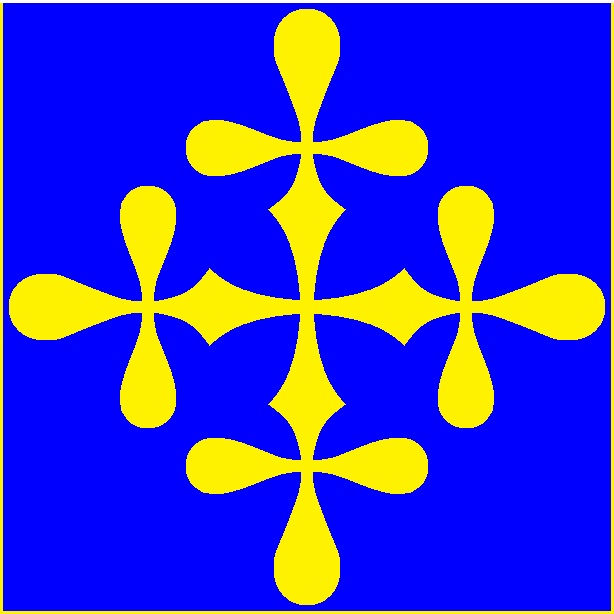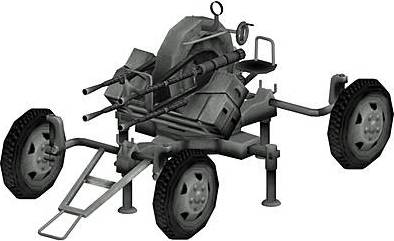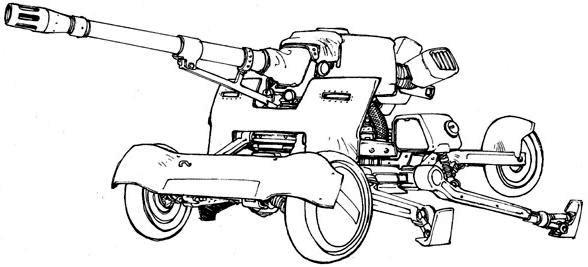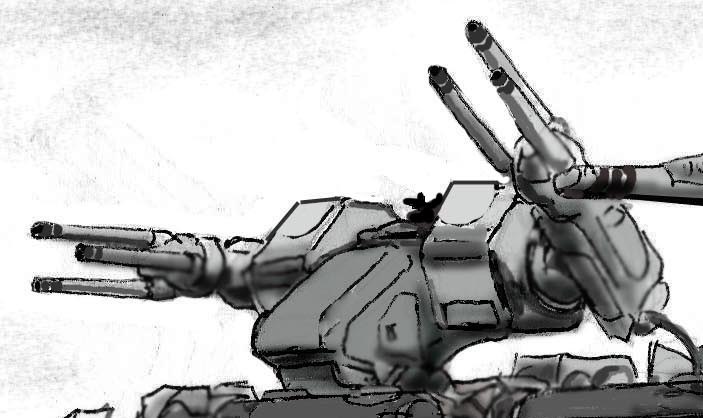 United Galaxies Council. |  United Galaxies Council. | ||||||||||||
|---|---|---|---|---|---|---|---|---|---|---|---|---|---|
| As the REF prepared for the Pioneer Mission, it was assumed at some point that waterborne operations may occur; In anticipation of this the REF purchased a few thousand of these LIBERTY II- and FRATERNITY-Class Cargo Ships and the FREEDOM-Class High Endurance Cutters would advance beyond proof-of-concept stage.) The operation expected ended up not happening, but the trucks themselves remained, some of which were later converted into the prototype for the TU-02 Basic Trailer Units but most of which remained unchanged. The ACL has continued in service, though in more limited capacities, typically in support of riverine area operations for supply and as floating fire support bases. In the intervening years, the ACL has been repowered using advancing hyrdocell powerplants, refitted with grav pods, uprated in terms of both firepower and armor, and even redesigned (though slightly) with retractable wheels. The vehicle is self-cribbing; The driver/coxswain lands the craft, inflates the tires to maximum safe pressure, drives over the saddles, then deflates and if necessary retracts the wheels, thus setting it on the saddles. The tires can be inflated from the driver's seat using internal air tanks, thus reducing their exposure. Each vehicle comes with a bimini top for the cabin/fantail and for the forWard turret, though a hard top (providing 50 MDC) is also available for the (cabin aft). The hard top can also mount a second M-35 ring mount. As a small, but decidedly valuable, creature comfort, a coffee maker and small refer is included in the cabin on the assistant coxswain's side (the coffee pot locks into place automatically). ACL's are typically only used on planets with liquid water content specifically in aquatic regions, and the REF long ago issued a General Information bulletin recommending against using ACL's for protracted land operations (beyond 10 miles of shoreline) and against using them in grav pod-primary modes. Most ACL operators don't like going beyond 1 mile of shore anyways, and few use the grav pods anymore than absolutely necessary to overcome obstacles that can not be crossed or bypassed, since "it rides like a mule." Weapons Systems The weapons systems on the ACL are variable, but some caution should be exercised; The standard arrangement is twin R-40c on an M-35 ring mount forWard, M-5 Plasma Launcher on a pintle aft of the Coxswain/Driver, and in theater a L-08 Rail Launcher aft. This can be increased to twin L-08 Rail Launcher aft, then to L-02a Rail Launchers forWard, then to L-08 Rail Launcher forward and an M-16 anti-aircraft turret aft. However, this degree of armament, referred to colloquially as a "dreadnaught" or "monitor," badly effects the handling characteristic of the craft on the water, and worsens the already rough over-land grav pod handling. In fact, it worsens the over-land wheel based handling, since it makes the craft horribly top heavy. The future of the ACL is pretty rosy for the time being; Because it is cheap and easily replaced, fast, and can carry a decent amount of cargo, there's not likely to be a replacement possible for some time to come. To give some sense of perspective, the duty section of an Elephant-Class Cargo landship cost more in pay, meals, benefits, etc. per day than an ACL to replace (crew and all, assuming like-for-like rank and seniority). However, the relatively light armor and nominal firepower (twin R-40c's and usually one M-5) has drawn some criticism, especially in the kind of near-front environments the ACL was conceived for. There are some who believe the ACL should be retired in favor of the M-406 Turaladri'e AIFV. Passengers: 5 power armored troopers CAN be carried if absolutely necessary. M.D.C. By Location: | |||||||||||||
| Main Hull- Pilot House- ForWard Turret- R-40 Rail Gun (2)- | 150 100 100 50 each | Aft XM-5 Plasma Cannon- Mortar- Radar Unit- Retractable Wheels (40)- | 75 each 80 100 75 each | ||||||||||
| Speed And Statistical Data: | |||||||||||||
| On The Water: 40 knots. Range in the water: 600 miles. Can be refueled underway. On Land: 40 MPH. Range on Land: 200 miles. Can be refueled while still running. Length: 30 feet. Width: 8 feet. Draft: 1 foot. Clearance: 7 feet (4.5 with mast down). Cargo: Up to 500 lbs of cargo CAN be carried if absolutely necessary. Power System: Hydro-cell. | Drive Systems: In the water: Water Jet (sucks water in front, spits it out under high pressure and heat out the back). On Land: Standard 7 gear transmission (reverse, park, neutral, and 4 stages of forWard). An on board computer system trims the gears to whatever directional input the coxswain give, so that it still steers just like a car. Cost: 10,000 credits new and unarmed. Availability: Every 6 weeks a new batch of 5 are commissioned. Black Market: Not available. They're sold openly unarmed as fishing boats. | ||||||||||||
| Weapons Systems The weapons systems on the ACL are variable, but some caution should be exercised; The standard arrangement is twin R-40c on an M-35 ring mount forward, M-5 Plasma Launcher on a pintle aft of the Coxswain/Driver, and in theater a L-08 Rail Launcher aft. This can be increased to twin L-08 Rail Launcher aft, then to L-02a Rail Launchers forward, then to L-08 Rail Launcher forward and an M-16 anti-aircraft turret aft. However, this degree of armament, referred to colloquially as a "dreadnaught" or "monitor," badly effects the handling characteristic of the craft on the water, and worsens the already rough over-land grav pod handling. In fact, it worsens the over-land wheel based handling, since it makes the craft horribly top heavy. Available Arrangements: Forward: | |||||||||||||
| 1. Twin R-40c Rail Guns on a forWard M-35 ring mount: Essentially the C-40R rail gun. The original design had a pair of .50 cal. machine guns mounted here. M.D.: 1D4 times 10 per 40 round burst (can only fire bursts). Range: 4,000' Rate of Fire: Per Gunner's attacks per melee. Payload: 40,000 rounds (that's 1,000 bursts). 2 additional ammo drums can be carried, but take 1 minute (4 melees) to put into position. 2. L-02a Rail Launcher: Fed from four 20-round drums on both sides of the system. This system is effective both in a low-altitude air defense role, and in a ground-role. The  system is optically or radar controlled and can be installed on armored vehicles. Designed for Micro-Missiles. system is optically or radar controlled and can be installed on armored vehicles. Designed for Micro-Missiles.Purpose: Heavy Assault. Weight: 1.2 tons Damage and Range: Varies by type used. Rate Of Fire: Per gunner's attacks per melee. Payload: 20 per magazine (loads from the sides) per barrel (80 total). Bonus: Either quadruples the normal range of the missile OR triples it and adds +3 to strike. | 3. L-08 Rail Launcher: Radar controlled, manually fired, designed for Mini-Missile's. Purpose: Heavy Assault. Weight: 2 tons Damage and Range: Varies by type used. Rate Of Fire: Per gunner's attacks per melee. Payload: 10 per magazine (loads from the right side). Bonus: Either quadruples the normal range of the missile OR triples it and adds +3 to strike.  | ||||||||||||
| Amidships: | |||||||||||||
| 1. M-5 Plasma Launcher: A basic plasma launcher. The weapon itself is based on the M-21 plasma launcher, but has FAR superior range (due to a greater number of primer rings). Mounted on a pindle aft of the pilot house. Some ACL's have 2, one on either side of the aft weather deck. Purpose: Defense/Anti-Infantry/Power Armor. M.D. : 5D6. Rate of Fire: Standard; Pilot or copilot can automatically use this weapon. Range: 6,000'. Payload: Unlimited. 2. R-40c Rail Guns: Can be used in place of the M-5. M.D.: 1D4 times 10 per 40 round burst (can only fire bursts). Range: 4,000' Rate of Fire: Per Gunner's attacks per melee. Payload: 40,000 rounds (that's 1,000 bursts). 2 additional ammo drums can be carried, but take 1 minute (4 melees) to put into position. | 3. M-17 Standard Depth Charge: A hand-dropped depth charge used to assist in corralling incurring submarines. The actual container for the depth charge is a modified version of a 20-gallon fuel drum. Purpose: Anti-Submarine. M.D.: 1D6. Rate of Fire: 1 every 2 melee rounds (must be hand dropped). Diving Range: From 10' to 150'. Payload: Generally no more than 10 are carried. 4. Crews Weapons: Members of the crew can actually stick their guns out the sides and start shooting. There are 6 E-Cables along each side for just that reason. 5. Hardtop Conversion: With a hard top, an extra M-35 ring mount can be included. | ||||||||||||
| Aft: | |||||||||||||
| 1. Single or Dual L-08 Rail Launcher: Radar controlled, manually fired, designed for Mini-Missile's. Rarely mounted until in-theater. Purpose: Heavy Assault. Weight: 2 tons Damage and Range: Varies by type used. Rate Of Fire: Per gunner's attacks per melee. Payload: 10 per magazine (loads from the right side). Bonus: Either quadruples the normal range of the missile OR triples it and adds +3 to strike. | 2. Model-16 Anti-Aircraft Turret: Based on the upper body of the Mecha Knight Destroid. Each has 4 types of weapons: A pair of Laser Cannon "arms," "shoulder" missile launchers, quintary head lasers, and a "belly" 20MM, 5-barreled Gatling guns for anti-missile defense. Special bonus: The turret has its own built-in fixed forWard radar, giving it +2 to strike. Loss of this radar negates this advantage, but the guns and missiles can still be trained by the ACL's standard radar or off-boat targeting. A) Laser Cannons (6): Based on the laser cannons on the Raidar X, these are the main weapon of the turret. NOTE: These guns fire in tandem, like pom-pom guns. If one barrel is damaged, reduce the damage and rate of fire FOR THAT ARM by a Third. Each gun must be targeting the same object as the other (can not be independently targeted). Purpose: Anti-Aircraft/Ship. MD: 2D10 short burst, 4D10 medium burst, or 6D10 long burst. Rate of Fire: 8 short, 4 medium, or 2 long bursts per arm per melee per gunner's attacks per melee. Range: 08 miles. Payload: Unlimited. B) MRM Launcher Shoulders (2): A pair of MRM launchers mounted at the approximate position as the shoulders. Purpose: Anti-Ship/Aircraft. Missile Type: Medium Range. Rate of Fire: Volleys of 1, 2, 3, 4, 6, 12 or all 24 per gunners attacks per melee. Payload: 24 per launcher (48 total); Reloading takes about 5 minutes for a full reload (10 missiles take about 1 melee). C) Quintary Head Lasers: Toggled directly to the gunners eyes, this weapon shoots where they see. Based directly off of the old VF-1 lasers, there are 5 lasers, arranged in the lesser-known Zulu configuration. Purpose: Anti-Missile Defense. MD: 5D6 per blast. Rate of Fire: Per gunners attacks per melee. Range: 2,000 feet. Payload: Unlimited. D) 20MM Vulcan Gatling Gun: This gun is actually automated. The gunner activates the weapon by flipping a red switch under a cover on the control panel. The gun can NOT tell friend from foe, only whether an object is closing with the ship and how fast it is moving. If it meets certain criteria, the gun fires, throwing a wall of lead that either shreds the missile OR causes it to prematurely detonate. Purpose: Anti-Missile Defense. MD: 5D6 per 10 round blast. Rate of Fire: Up to 6 per melee. Range: 6,000 feet. Payload: 6,000 rounds (600 bursts). Reloading takes 20 minutes. | ||||||||||||
 | |||||||||||||
(one of the proposed but never advanced designs). Features: |
| ||||||||||||
